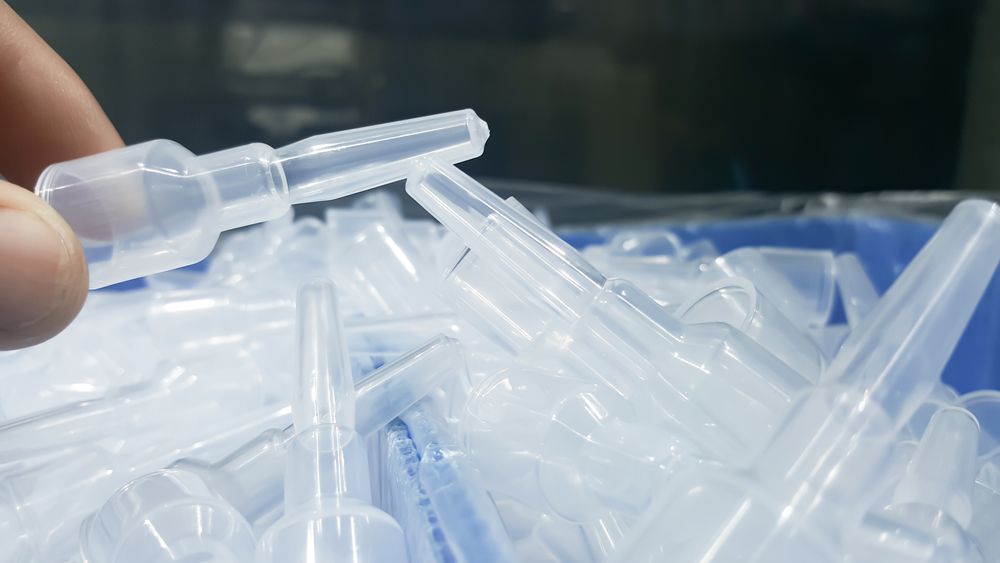Medical plastic injection molding is a specialized manufacturing process used to produce precision plastic components and products specifically tailored for medical applications. This technique involves injecting molten plastic material into a custom-designed mold cavity, allowing it to cool and solidify into the desired shape. The result is high-quality, intricate plastic parts that meet the stringent requirements of the healthcare industry.
Understanding the Process of Plastic Injection Molding
Plastic injection molding involves several key components and stages to produce medical-grade components. It begins with the creation of a mold, typically made from steel or aluminum, which serves as a negative of the final product. The mold is then clamped shut, and molten plastic material is injected into the cavity under high pressure. Once the plastic cools and solidifies, the mold opens, and the finished part is ejected.
Importance of Medical-Grade Plastics in Healthcare
Medical-grade plastics play a crucial role in modern healthcare due to their unique properties such as biocompatibility, sterilizability, and chemical resistance. These materials are extensively used in various medical applications, including Medical Molding devices, surgical instruments, and pharmaceutical packaging, ensuring safety, reliability, and efficacy in patient care.
Applications of Medical Plastic Injection Molding
Medical Devices
Medical plastic injection molding is utilized in the production of a wide range of medical devices, including catheters, syringes, tubing, and connectors. These devices require precise dimensions, intricate geometries, and strict regulatory compliance to ensure optimal performance and patient safety.
Surgical Instruments
Surgical instruments such as forceps, scalpels, and retractors are often manufactured using medical plastic injection molding. These instruments require exceptional durability, sterilizability, and ergonomic design to facilitate surgical procedures effectively.
Pharmaceutical Packaging
Medical plastic injection molding is instrumental in the production of pharmaceutical packaging solutions such as vials, bottles, and containers. These packaging materials must maintain the integrity and stability of pharmaceutical products while adhering to stringent regulatory standards.
Advantages of Medical Plastic Injection Molding
Medical plastic injection molding offers numerous advantages, including high precision, cost-effectiveness, rapid production, and design flexibility. It allows for the creation of complex geometries, intricate features, and custom configurations to meet the specific requirements of medical applications.
Challenges in Medical Plastic Injection Molding
Despite its benefits, medical plastic injection molding presents certain challenges, particularly in regulatory compliance, material selection, and quality control. Manufacturers must adhere to strict regulatory standards, select suitable medical-grade materials, and implement robust quality assurance processes to ensure product safety and efficacy.
Future Trends in Medical Plastic Injection Molding
The future of medical plastic injection molding is marked by advancements in materials, technologies, and processes. Emerging trends include the development of biocompatible and bioresorbable materials, the integration of automation and robotics for enhanced efficiency and consistency, and the implementation of sustainable practices to minimize environmental impact.
Environmental Considerations in Medical Plastic Injection Molding
While Medical Molding offers numerous benefits, it also raises environmental concerns related to plastic waste and pollution. Manufacturers are increasingly exploring sustainable alternatives, such as biodegradable materials, recycling initiatives, and eco-friendly manufacturing practices, to mitigate the environmental footprint of medical plastic products.
Conclusion
In conclusion, medical plastic injection molding plays a pivotal role in the healthcare industry by enabling the production of high-quality, precision plastic components and products for medical applications. Despite facing challenges such as regulatory compliance and environmental impact, this manufacturing process continues to evolve, driven by innovation and technological advancements, to meet the growing demands of the healthcare sector.
FAQs
- What are the key components of plastic injection molding? Plastic injection molding involves a mold, injection unit, clamping unit, and ejection system.
- Why is material selection critical in medical plastic injection molding? Material selection ensures the biocompatibility, sterilizability, and chemical resistance of medical-grade plastics.
- How does regulatory compliance impact medical plastic injection molding? Regulatory compliance ensures that medical devices and components meet stringent safety and quality standards set by regulatory authorities.
- What are the benefits of using medical plastic injection molding for surgical instruments? Medical plastic injection molding enables the production of durable, sterilizable, and ergonomically designed surgical instruments for enhanced surgical performance.
